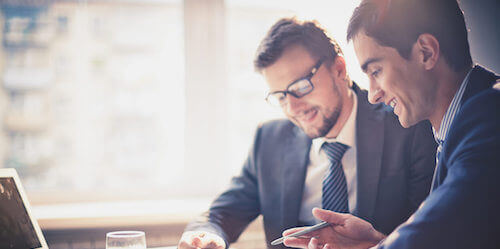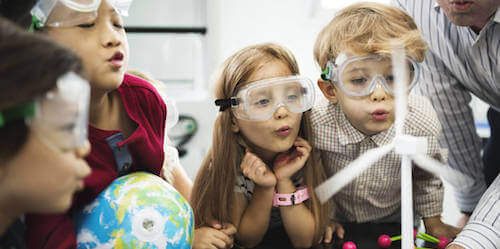 Happy to be learning
Happy to be learning
Child-centred education on alluvial islands in Bangladesh
Yasmin Hak is particularly impressed by one of her pupils: "Maya is such a bright and fearless girl. And incredibly creative!", the teacher tells us. "In our village school she can flourish, she can sing, dance and paint. She especially likes the song about the girls who have different religions and dance together. She sings that quite often and teaches it to her friends." Maya's parents were sceptical at first. On the one hand, they were happy that their daughter could go to school at all. There are not enough schools here on the banks of the great river, and Maya's father earns very little as a fare collector. But the parents did not like that Maya goes to school together with poor children and children of other religions. In the meantime, however, their attitude has changed: "The parents both come to our school picnic and celebrate together with the other families. Recently, the mother said to me: I don't know how, but you have enchanted my daughter!"
Necessity
Quality and inclusive primary education for children excluded from the education system in northwest Bangladesh.
Activity
60 teachers teach 1,800 children in 60 newly established village schools. Local NGOs provide them with teacher training and community outreach support.
Countable effort
Number of days when children go to school and receive quality teaching.
Result
The children know how to read, write, do maths and express themselves confidently and creatively. They pass the exam and continue their schooling.
Systemic effect
Primary education in remote regions of Bangladesh becomes more equitable and improves in quality.
Background
Since its transition to democracy in the 1990s, Bangladesh has achieved a lot in terms of education. Most children now go to school. However, 2.6 million children of primary school age are still denied school attendance (UNICEF, 2014) – due to the consequences of the Corona pandemic, this number has recently risen further. Girls and, more generally, children whose families live in poverty or belong to religious and ethnic minorities are most often unable to attend school. They are discriminated against and excluded from school. Or they have to live in places where there is no school at all. For example, on the alluvial islands in the middle of the country’s great rivers. The second major problem is just as serious: the poor quality of the schools. Teachers often have to teach 40 to 60 children at a time. They can only pay little attention to each child and rely on rote learning. Even with expensive tutoring, many children have difficulty making progress. Almost every fourth child drops out of primary school (Chowdhury, 2019). And those who stick with it often take far longer than they should: It takes an average of eight and a half years to complete grade five. Unfortunately, this does not mean that the children actually learn a great deal in the process. On the contrary: not even one in four children can read and understand simple texts after the third grade (Alam, 2019). So there is still a lot to be done.
The good deed
Your good deed today enables a child in Bangladesh to go to primary school for three days. No matter whether girl or boy, whether religious or not, whether with rich or poor parents: In the newly founded village schools, all children learn together. The teachers are also local. They know the children's problems and have a direct line to the parents. Community and school officers organise government support and school meals in times of need, for example during floods. All teachers receive basic training and regular refresher courses in child-centred teaching so that the pupils can learn better. They encourage the children in their creative development and do experiments in natural history using materials from the environment. The children not only enjoy this, they also learn a lot: 95 per cent of them are able to complete primary school. This good deed lays the foundation for the children's future and strengthens inclusion in remote regions.

AboutBangladesh
Dhaka
Capital
164,689,383
Number of inhabitants
1,969 USD
Gross domestic product per capita per year
133 of 189
Human Development Index
Bangladesh is located in the Ganges Delta, the largest river delta in the world. With a population density of 1,265 people per square kilometre, the country is the most densely populated territorial state in the world (Statista, 2018).
About the organization and further information
Association
NETZ e.V. Bangladesch – Partnerschaft für Entwicklung und Gerechtigkeit
Website


Further information and source
- Alam, S., 2019. Weakness of Grade Three Students in Bangla. Causes and Remedies, National Academy for Primary Education (NAPE), Dhaka.
- Chowdhury, M. D., 2019. Impact of School Dropout on Human Development in Bangladesh, ABC Research Alert, 7(3), Dhaka.
- Saam, D., 2017. Lernen fürs Leben. Bildung zwischen Anspruch, Chancen und Realität, NETZ Bangladesch-Zeitschrift, Wetzlar, Deutschland.
- Statista, 2018. Die 20 Länder mit der höchsten Bevölkerungsdichte im Jahr 2018, Stand: 25.03.2021, Hamburg.
- UNICEF, 2014. Global Initiative on Out-of-School-Children. South Asia Regional Study, Stand: 23.03.2021, Kathmandu.




